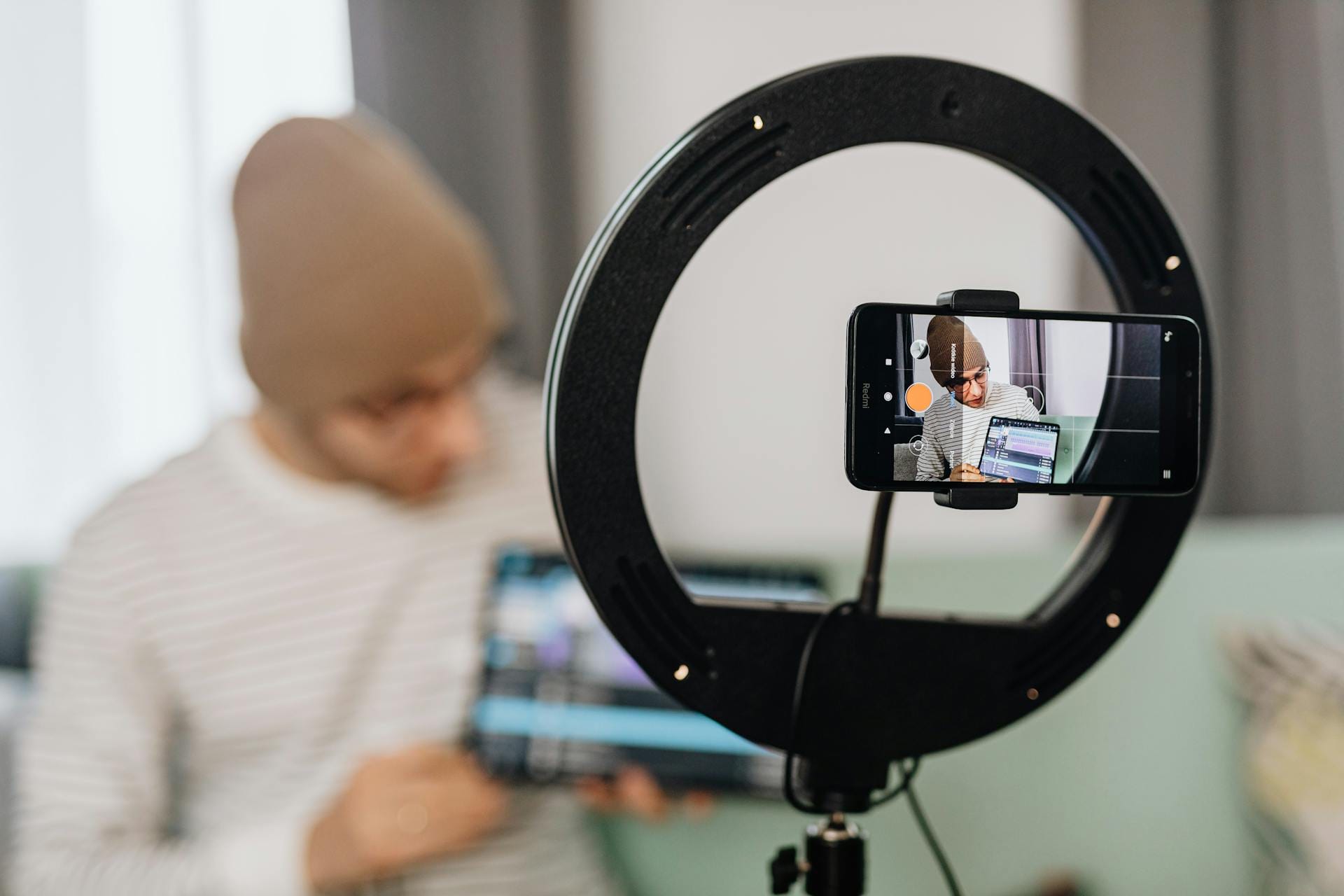
10 Ways to Make Money on YouTube in 2024
Folks are making serious money on YouTube.
Before you start looking at YouTube monetization strategies, you need to start a YouTube channel and grow your audience.
Lots of YouTube money-making tactics have eligibility requirements, such as total video views or channel subscribers. So you won’t have access to every method on day one. But once you get comfortable with growing your audience, there’s no limit to how much you can make.
New to IWT?
The Best 10 Ways to Make Money on YouTube
We’ll break down the pros and cons of each method, and show you how to get started today.
Table of Contents

Join the YouTube Partner Program
The most straightforward way to earn money on YouTube is with the YouTube Partner Program (YPP). In a nutshell, you can monetize your content with advertising revenue.
For those of you who don’t know, YouTube is a subsidiary of Google. So you’ll need a Google AdSense account to proceed. You might already be familiar with this ad network if you’ve run advertisements on a website in the past.
To be considered for the YouTube Partner Program, your account must meet the following minimum eligibility requirements:
- 18 years or older (or have a legal guardian 18+ who can manage your AdSense payments)
- Located in a country or region where the program is available
- Have 1,000+ subscribers
- Have 4,000+ hours of public watch hours in the last 12 months
- Follow all YouTube channel monetization policies
Not every channel will be eligible for the program. Channels displaying certain types of content are not considered “advertiser-friendly.”
For example, anything related to adult content, foul language, firearms, tobacco, violence, drug use, and controversial issues can’t be monetized. You can review YouTube’s advertiser-friendly content guidelines here.
Once you’ve been accepted into YPP, you can set up your ad preferences and enable monetization on your content. Payments will automatically be issued through AdSense.
Channel Memberships
If you’re producing high-quality content on YouTube, you can consider charging users for subscribing. This money-making strategy is reserved for YouTube content creators who already have lots of subscribers.
The minimum eligibility requirements for a YouTube channel membership include:
- 18+ years old
- Must be living in an available location
- Channel is not labeled as “made for kids”
- 30,000+ subscribers (1,000+ subscribers for gaming channels)
- Channel is part of the YouTube Partner Program
- Channel doesn’t have lots of ineligible videos (Example: videos with claimed music)
If your account is eligible, you’ll see “Memberships” as an option on your admin page.
Your memberships can include things like badges, videos, live chat, emojis, and other content that your subscribers will find useful.
Just make sure you’re finding a way to add value to your content and make your members feel special. Contests, lotteries, sweepstakes, in-person meetings, and music downloads are all prohibited.
Once you establish a strong group of loyal fans, channel memberships can be the perfect way to benefit from recurring revenue each month.
Sell Merchandise
Do you have an ecommerce website? If so, you can add merch to your YouTube videos by linking to products or your storefront via YouTube.
You just need to make sure it’s on the list of approved merchandise sites. Shopify sites are eligible.
Other requirements for the YouTube merchandise shelf include:
- 18+ years old
- 10,000+ subscribers
You can’t add merchandise cards to videos set for kids.
Anyone with an ecommerce website should definitely consider using YouTube as an alternative method to drive merchandise sales.
The world wants you to be vanilla...
…but you don’t have to take the same path as everyone else. How would it look if you designed a Rich Life on your own terms? Take our quiz and find out:
Crowdfunding
In addition to merchandise, you can also add crowdfunding cards to your YouTube videos.
These links from approved crowdfunding sites (like Kickstarter and Indiegogo) can drive awareness to your campaigns.
Here’s an example. Let’s say you’re creating a new product, like a hiking backpack for photographers. You’re running a campaign on Kickstarter to fund the project.
There’s a good chance that you’re using videos as a promotional tool to show all of the backpack’s features. If you upload that video to YouTube, you can drive crowdfunding support directly from your YouTube content.
Influencer Marketing
If you have a strong social media following, you can leverage influencer marketing to get paid for uploading sponsored content to YouTube.
This is a little bit different from some of the other YouTube monetization strategies that we’ve looked at so far. That’s because you’d be getting paid from brands directly, which won’t be facilitated through YouTube or AdSense.
You do not need to be part of the YouTube Partner Program to get paid for sponsored content. There are no minimum number of subscribers or video views either.
However, you’ll still need to follow YouTube’s guidelines for paid product placements and endorsements.
Full disclosure is the biggest component of this policy. In addition to including something along the lines of “paid promotion” in your video content, YouTube requires that you check a box in your advanced settings labeled “video contains paid promotion.”
The sky’s the limit for what you can make as a video creator with influencer marketing. It’s up to you to negotiate your rates with different brands.
If you’re just getting started in this space, you can negotiate free products in your niche before you start asking for money. This is a great way to build your audience and establish relationships with brands for the long term.
Affiliate Programs
Affiliate marketing is similar to influencer marketing. The most significant difference between the two is the way that you’re compensated.
As an affiliate marketer, you’re typically paid a fixed amount per sponsored post. For example, if you do a product review or even just mention a product in one of your YouTube videos, you’ll get $500, regardless of the video’s performance. Whether the video gets 20 views or 20,000 views, your pay remains the same.
Affiliate programs are based on results, typically in the form of sign-ups or conversions.
For example, let’s say you joined Shopify’s affiliate program. It pays an average of $58 per user who signs up using your referral link and $2,000 for a Shopify Plus referral.
You might upload some “how to” videos on YouTube related to Shopify and ecommerce. Then, include an affiliate link in the description and encourage viewers to sign up for Shopify using your referral code.
With uncapped commission, this can become a highly lucrative money-making strategy.
Product and Service Promotions
Another way to make money on YouTube is by promoting your own products or services.
Whether you’re a small business owner, freelancer, or have an ecommerce shop, you can create and upload engaging content related to your brand.
Unlike the merchandise strategy, there won’t be any requirements from YouTube. You just won’t be able to have direct product merch links or cards in your video.
But that shouldn’t stop you from running product demonstrations or brand awareness campaigns about your products and services. The money made here won’t come directly from YouTube. Instead, your business or personal brand would benefit.
Super Chat and Super Stickers
Super Chat and Super Stickers are some of the best ways to monetize your YouTube live streams. Viewers can purchase these items to stand out during your live sessions.
People who buy Super Chat and Super Stickers will have a colored message within the chat feed.
Depending on how much they spend, the user’s YouTube profile stays at the top of the feed for a certain length of time. The more money they spend, the longer those stickers remain at the top of the chat.
This monetization strategy is facilitated through the YouTube Partner Program. Lots of users use this as an opportunity to promote their personal brands or channels. So in a way, it’s almost like selling ads in your live chat feed.
Requirements for Super Chat and Super Stickers include:
- Age 18+
- Monetized channel
- 1,000+ subscribers
- Living in an available location
Videos that are age-restricted, private, unlisted, or made for kids are not available for Super Chat and Super Stickers.
YouTube Premium
YouTube Premium is a paid membership for any YouTube user. For $11.99 per month, users can benefit from improvements like:
- Ad-free viewing
- Background play (videos still play while using other apps or screen is locked)
- Download videos and view later (ideal for planes and commuting)
- YouTube Music Premium
The revenue that YouTube generates from premium subscriptions is shared with creators based on how much their content gets viewed.
License Your Content
Media outlets are always looking for high-quality video content. Whether it’s a viral video or timely footage that’s newsworthy, those companies know that they need to pay for using someone else’s video.
Let’s say you happened to film a tornado or accident. A media outlet might want to use your footage on their website.
Include a business email in your video descriptions and channel profile for licensing purposes.
You can also submit your YouTube videos on platforms like Junkin Media.
Media networks like CBS, NBC, FOX, CNN, Animal Planet, The Weather Channel, and dozens of others use Junkin Media to find video content.
If you liked this post, you’ll LOVE the Insider’s Newsletter
Join over 800,000 readers getting content that’s not available on the blog, free:



